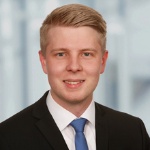Background
At the ISW, the design and use of digital twins is being researched and tested in collaboration with research partners from industry. The project comprises several sub-aspects that establish the digital twin as a central element of production. In addition to preliminary conceptual work for the entire consortium, the ISW is working on the prototypical implementation of the concepts in a specific simulation technology use case and integration in an institute-wide joint demonstrator.
Problem statement
The increasing individualization of customer requirements and the increasing time pressure to bring new products to market require end-to-end digitalization of supply chains and close collaboration between all partners involved. The growING project is therefore developing innovative methods for digital collaboration in order to balance out information asymmetries between the actors. The central element is a growing digital twin, in which all product information is iteratively enriched throughout the entire production cycle. The concepts and technologies developed will be tested in two industrial application scenarios of the project partners as well as in a joint demonstrator within the institute. In addition, concepts from the field of dataspaces will be used to seamlessly integrate the demonstrators into the digital ecosystem of ARENA2036.
Goals
Collaborative work on digital artifacts is made possible by consistent mapping and integration in the asset administration shell (AAS). This allows a consistent view across the entire life cycle of a product. The aim of the project is to develop an infrastructure architecture and analyze the interfaces and transitions along the life cycle. Previous approaches can generally either be classified as greenfield - they rely on the AAS as a central data storage system from the outset - or use the AAS purely as a data sink at the end of a process. In contrast, growING pursues brownfield integration into existing engineering tools and systems with their own data storage. These systems interact directly with the asset administration shells and allow them to grow over the life cycle. This is a novel approach. In addition to the technical architecture, particular attention is therefore paid to the development of integration guidelines for existing processes and systems. The consistent use of simulations over the entire life cycle of a machine or plant is becoming increasingly important in the course of digitalization. Although simulation models are already being used in different phases, there is still no consistent link between these models. For example, simulation models of individual components - such as FEM or sequence simulations - are created in the early engineering process. At the same time, independent digital twins are developed as part of virtual commissioning, but these are not based on the previously created models. This lack of integration leads to redundant modeling and inefficient use of existing resources. A central goal of growING is therefore the transferability and reusability of simulation models across the various life cycle phases. The aim is to realize continuous, consistent model chains that enable more efficient product development.
Get in touch

Nicolai Maisch
M.Eng.Research Assistant "Industrial Control Engineering"

Shengjian Chen
M.Sc.Research Assistant "Virtual Methods for Production Engineering"

Colin Reiff
M.Sc.Research Assistant "Mechatronic Systems and Processes"




